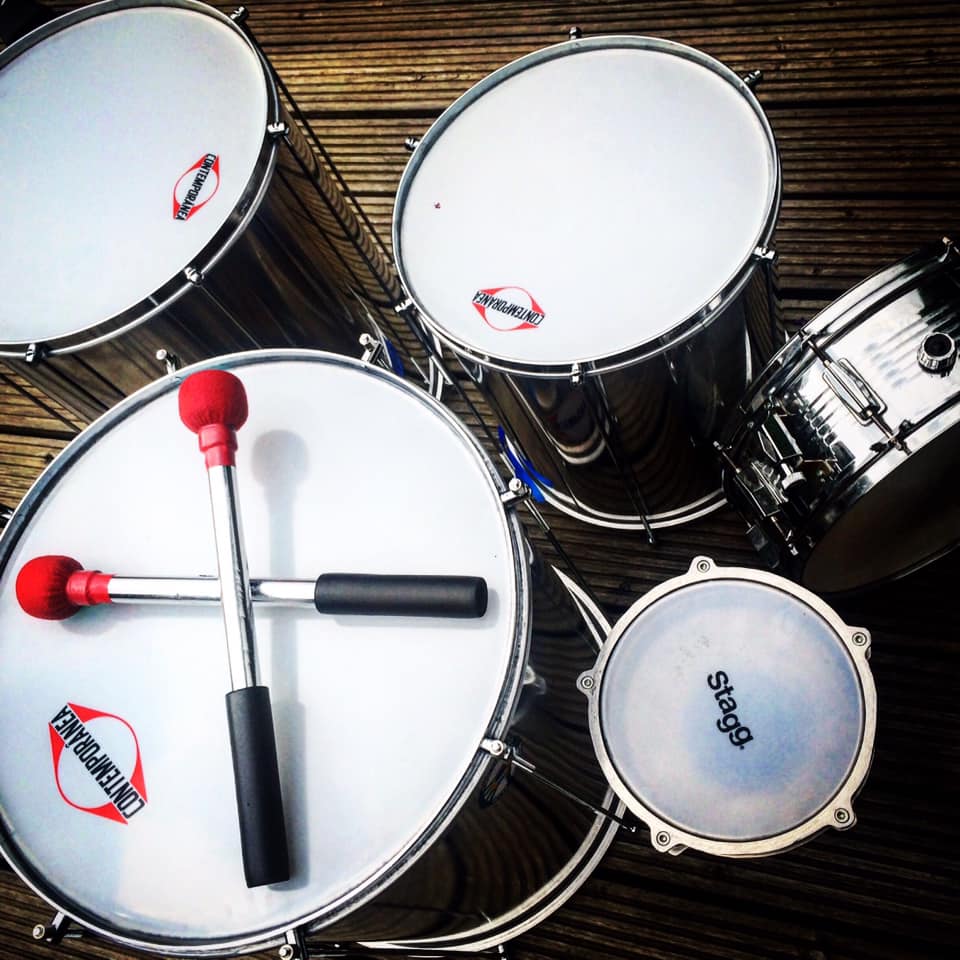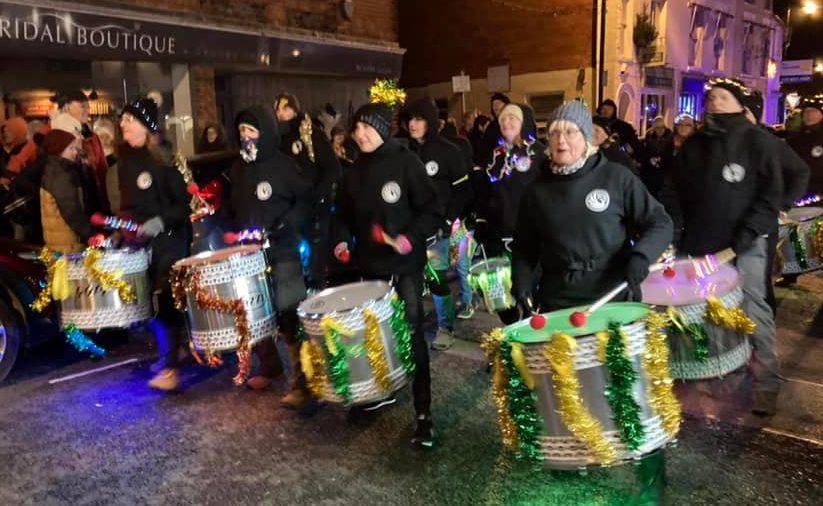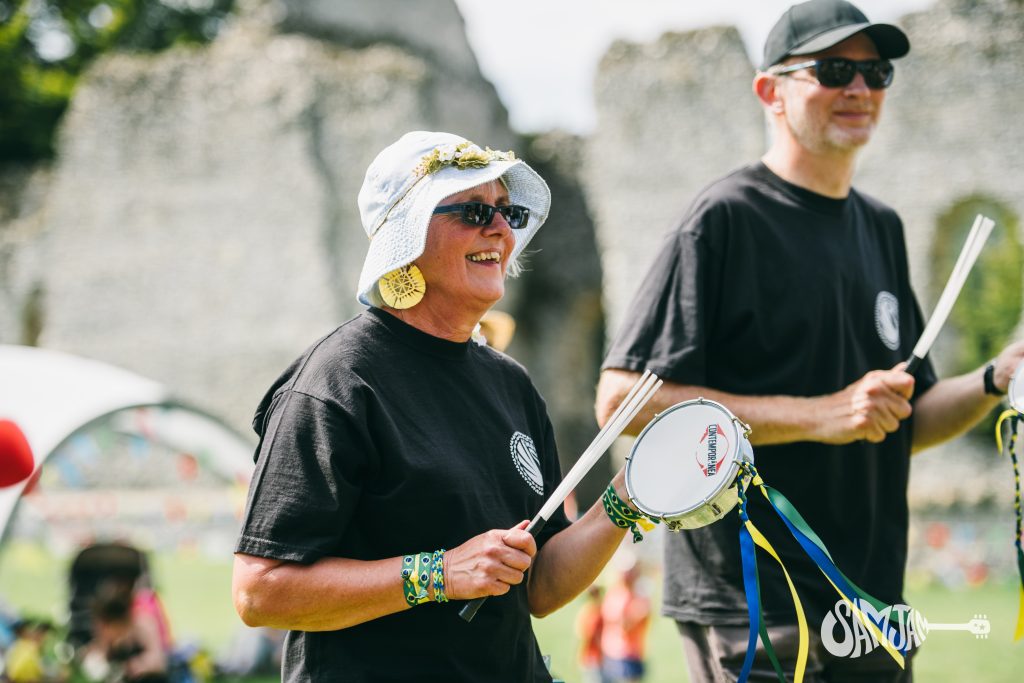Whatever musical form you learn, it’s good to know what you’re playing and it’s background. Here’s a samba drum guide to explain the drums used by Hampshire band Swan Samba and the context to some of the common grooves.

Surdo
The rhythmic backbone to the band. There are three sizes of this samba drum, commonly called Marcacao, Reposta and Cortador. The Marcacao is the deepest (bom!) sound, so for common Batucada and Reggae grooves it plays the stronger 2nd and 4th beats. The Reposta is then the higher sounding (bim!), usually tuned a 4th note interval above. The Cortador plays a similar role to the drum kit’s high tom. It plays signature rhythms filling in the gaps and for samba reggae is often the iconic offbeat (in between the pulse of the song).

Ganza
A vital role in keeping pulse but in a gentle, subtle way. The ganza is a fantastic starter instrument as it helps with dexterity and sense of tempo and isn’t too loud. Typically this instrument is played horizontally and held at either end. To make a sudden stop in the groove, it’s in the flick of the wrist!
Caixa
This samba drum is usually found at the back of the band, playing a repetitive, continuous groove in amongst the mix of other drums and percussion. It’s western cousin, the snare drum, is known for its gunshot-like crack sound… so the fact the caixa is in the background of the samba mix really does put the noise level of an average samba drum band into perspective! The caixa was introduced as a result of the Portuguese military bands and colonisation in Brazil. It’s original full name caixa de guerra translates as ‘war box’. It’s a good instrument to get to grips with, especially if you want to improve your drum skills and/or move to the repinique.
Repinque
Recognised as the loud, lead samba instrument. Often played by the caller, the rep (pronounced with a ‘h’) can be played with either one hand and a short stick or with two lengthy rods (this, like the other instruments, depends on style of samba band). Regardless of the opted playing style, the repinique player should be able to play several sounds on their drum, including the iconic slap sound which is made by flatly hitting the rim and skin of the drum simultaneously. Due to its loudness and complexity, the rep group in the band is usually the smallest.

Tambourim
This samba drum is often played with a three-way pronged stick, the common way to play the tambourim is to hold like a mirror and strike in the middle. They are a great instrument for the player to easily incorporate dance into their routine and are usually found at front of the procession or carnival.

Agogo
The agogo is the only tuned percussion in the average samba drum band (two singable notes). Their texture and timbre is sharp and cutting whilst their common position in the band is at the front, so there’s no place to hide if you get something wrong! Bands use this instrument in one of two ways: there is either a single player (giving them the freedom to improvise), or a small group of players (meaning that they need to be very well rehearsed).
Interested in playing a Samba drum? Why not join Hampshire band Swan Samba?
